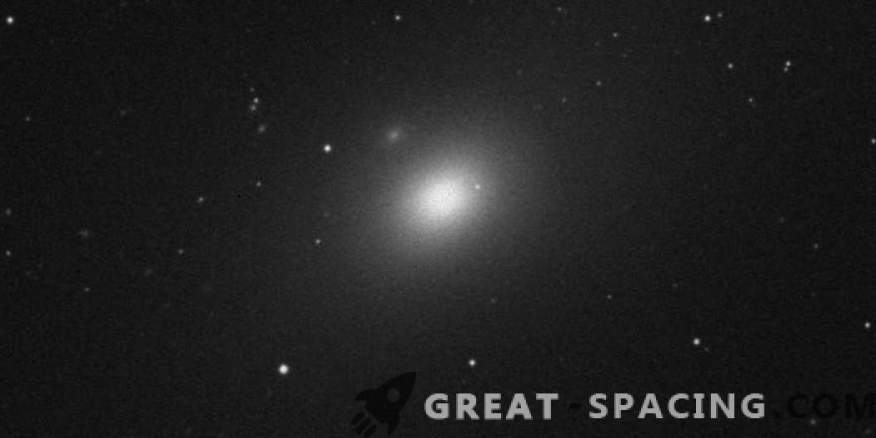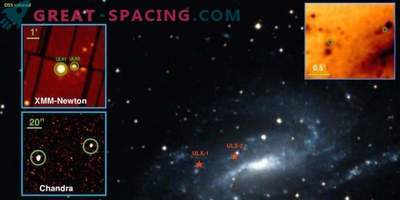
Using data from NASA's Chandra spacecraft, scientists were able to find a new, unusual, ultra-bright X-ray source (ULX) in the Messier elliptical galaxy 86. The find, designated as M86 tULX-1, lives at a distance of 62,000 light-years from the galactic center.
ULX - point sources in the sky, which seem so bright in X-rays that their luminosity exceeds a million sunlight at all wavelengths. They are inferior in brightness to active galactic nuclei, but more consistently luminous than any known stellar process. Despite numerous studies, the characteristics of the ULX are still incomplete.

Chandra images are centered around a strange source in M86 from July 24-25, 2013 (left) and May 2, 2016 (right)
Usually, ULX resides in host galaxies, but some have several. More often found in spiral types with starry birth. Less commonly seen in elliptical galaxies. One of these rare wonders got into the review. At a distance of 52 million light years in the Virgo Cluster there is an elliptical galaxy M86, which sheltered two ULXs at once. One of the sources is separated from the center of the galaxy at 62,000 light years in the north-west side. This is the second source, and the first (CXO J122611.830 + 125647.80) was identified in 2011. The unusual source of the M86 tULX-1 seems to be due to its relatively hard spectrum, transitional behavior, and other characteristics, such as high brightness and location in an elliptical galaxy. There are two possible explanations for the observations. Perhaps, we have a black hole of stellar mass, which is 30-100 times more massive than the Sun and accretes material from a giant low-mass satellite. The second assumption seems more believable. This is again a black hole of stellar mass in a transitional state between the normal and the super-small state.
There are other explanations: an active galactic core, a gravitational microlensing event, tidal destruction, a cataclysmic variable, a flashing star, or an extremely weak X-ray transition period in the galactic halo. The exact scenario will turn out to be determined after the future exploration of the James Webb space telescope.











































